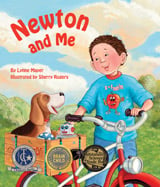Alignment to Standards for MO

| Grade | Number | Standard |
|---|---|---|
| 1 | SC-FM 1A1a. | Compare the position of an object relative to another object (e.g., left of or right of |
| 1 | SC-FM 1A1b. | Describe an objectês motion as straight, circular, vibrating (back and forth), zigzag, stopping, starting, or falling |
| 1 | SC-FM 1A1c. | Compare the speeds (faster vs. slower) of two moving objects |
| 1 | SC-FM 1A4a. | Classify different types of motion [straight line, curved, vibrating (back and forth)] |
| 1 | SC-FM 1A4b. | Describe an objectês motion in terms of distance and time |
| 1 | SC-FM 1AKa. | Describe an objectês position relative to another object (e.g., above, below, in front of, behind) |
| 2 | SC-FM 2A1a. | Identify the force (i.e., push or pull) required to do work (move an object) |
| 2 | SC-FM 2A2c. | Measure (using non-standard units) and compare the force (i.e., push or pull) required to overcome friction and move an object over different surfaces (i.e., rough, smooth |
| 2 | SC-FM 2A4a. | Identify the forces acting on the motion of objects traveling in a straight line (specify that forces should be acting in the same line as the motion, provide examples |
| 2 | SC-FM 2A4b. | Describe and compare forces measured by a spring scale in Newtonês) applied to objects in a single line |
| 2 | SC-FM 2A4c. | Recognize friction as a force that slows down or stops a moving object that is touching another object or surface |
| 2 | SC-FM 2A4d. | Compare the forces (measured by a spring scale in Newtonês) required to overcome friction when an object moves over different surfaces (i.e., rough/smooth |
| 2 | SC-FM 2A5a. | Identify the forces acting on a load and use a spring scale to measure the weight (resistance force) of the load |
| 2 | SC-FM 2AKa. | Identify ways (push, pull) to cause some objects to move by touching them |
| 2 | SC-FM 2D1a. | Describe ways to change the motion of an object (i.e., how to cause an object to go slower, go faster, go farther, change direction, stop |
| 2 | SC-FM 2D2a. | Describe the direction and amount of force (i.e., direction of push or pull, strong/weak push or pull) needed to change an objectês motion (i.e., faster/slower, change in direction) |
| 2 | SC-FM 2D2b. | Describe and compare the distances traveled by heavier/lighter objects after applying the same amount of force (i.e., push or pull) in the same direction |
| 2 | SC-FM 2D2c. | Describe and compare the distances traveled by objects with the same mass after applying different amounts of force (i.e., push or pull) in the same direction |
| 2 | SC-FM 2D4a. | Recognize Observe that balanced forces do not affect an objectês motion |
| 2 | SC-FM 2D4b. | Describe how unbalanced forces acting on an object changes its speed (faster/slower), direction of motion, or both |
| 2 | SC-FM 2D4c. | Predict how the change in speed of an object (i.e., faster/slower/remains the same) is affected by the amount of force applied to an object and the mass of the object |
| 2 | SC-FM 2D5a. | Describe how friction affects the amount of force needed to do work over different surfaces or through different media |
| 2 | SC-FM 2F2a. | Compare and describe the amount of force (i.e., more, less, or same push or pull) needed to raise an object to a given height, with or without using inclined planes (ramps) of different slopes |
| 2 | SC-FM 2F2b. | Compare and describe the amount of force (i.e., more, less, or same push or pull) needed to raise an object to a given height, with or without using levers |
| 2 | SC-FM 2F2c. | Apply the use of an inclined plane (ramp) and/or lever to different real life situations in which objects are raised |
| 2 | SC-FM 2F5a. | Explain how work can be done on an object (force applied and distance moved) |
| 2 | SC-FM 2F5c. | Compare the measures of effort force (measured using a spring scale to the nearest Newton) needed to lift a load with and without the use of simple machines |
| 2 | SC-FM 2F5d. | Recognize simple machines change the amount of effort force and/or direction of force |